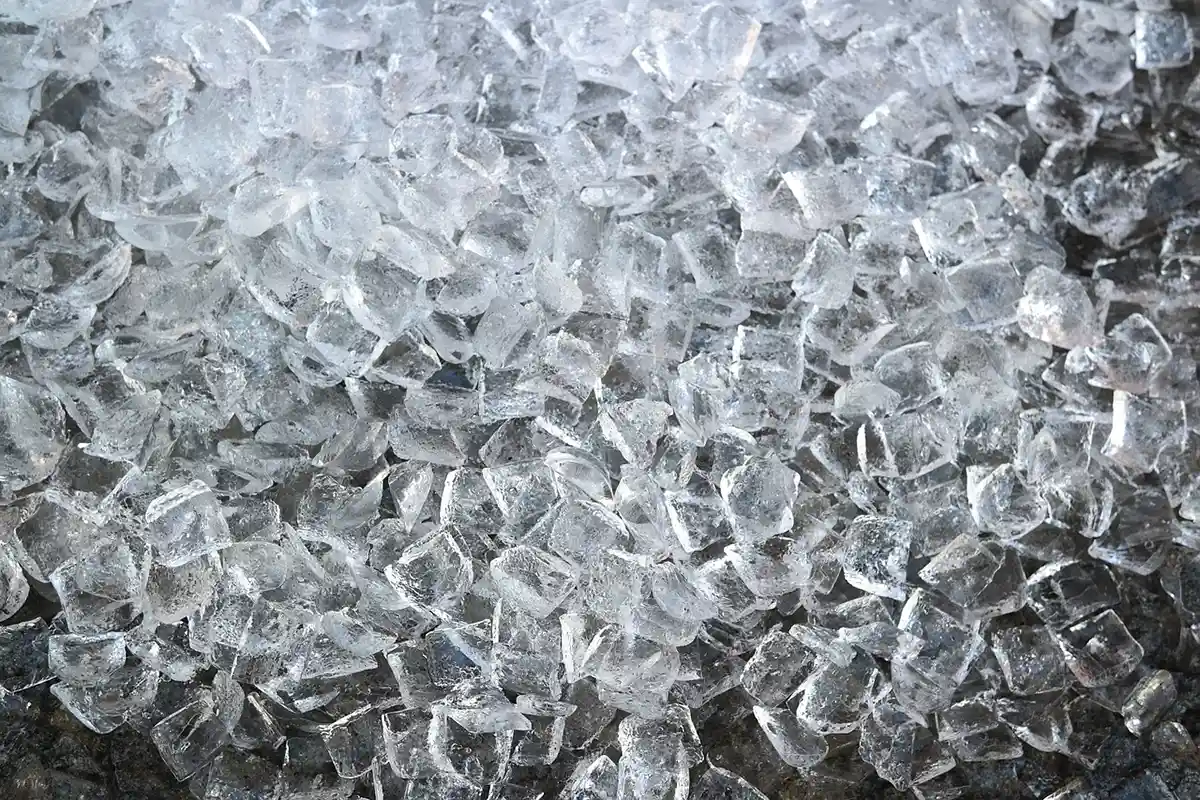Cloudy ice cubes can be frustrating, especially when you’re looking for crystal-clear ice to enhance the appearance and quality of your beverages. The cloudiness is often caused by impurities or trapped air bubbles in the freezing process. In this troubleshooting guide, we’ll explore the common causes of cloudy ice cubes and provide practical solutions to help you achieve clear ice cubes every time.
Introduction
Clear ice cubes not only look visually appealing but also melt more slowly, reducing dilution and maintaining the integrity of your beverages. Cloudy ice cubes, on the other hand, can be unappealing and may affect the taste of your drinks. By identifying the causes of cloudiness and implementing the right solutions, you can bid farewell to cloudy ice cubes and enjoy the beauty of clear ice.
The Causes of Cloudy Ice Cubes
Cloudy ice cubes can be attributed to the following factors:
- Impurities in Water: Minerals, dissolved gases, or other impurities in the water can contribute to cloudiness when frozen.
- Trapped Air Bubbles: Rapid freezing or agitation during the freezing process can trap air bubbles, resulting in cloudy ice cubes.
- Temperature Fluctuations: Sudden temperature changes in the freezer can affect the formation of ice crystals and lead to cloudiness.
Solution 1: Use Filtered Water
Using filtered water is one of the simplest ways to minimize impurities and achieve clearer ice cubes:
- Invest in a Water Filter: Install a water filter in your home or use a pitcher with a built-in filter to remove impurities before filling your ice cube trays.
- Let Tap Water Sit: If you don’t have access to filtered water, fill a container with tap water and let it sit at room temperature for a few hours. This allows some of the dissolved gases to escape, resulting in clearer ice cubes.
Solution 2: Boil and Cool the Water
Boiling and cooling the water before freezing can help eliminate dissolved gases and reduce cloudiness:
- Boil the Water: Bring the water to a rolling boil to release dissolved gases and impurities. Boil for a few minutes to ensure thorough removal.
- Cool the Water: Allow the boiled water to cool to room temperature or refrigerate it before filling the ice cube trays. This process helps minimize cloudiness by reducing the presence of impurities.
Solution 3: Distilled Water Method
Using distilled water provides a clean and pure base for clear ice cubes:
- Purchase Distilled Water: Buy distilled water from your local store. It has undergone a process that removes impurities and minerals.
- Fill the Trays: Pour the distilled water into the ice cube trays and place them in the freezer for freezing.
Solution 4: Slow Freezing Technique
Slow freezing helps eliminate trapped air bubbles and allows impurities to settle, resulting in clearer ice cubes:
- Fill the Trays: Fill the ice cube trays with filtered or boiled water, leaving a small gap at the top to accommodate expansion.
- Freezing Time: Place the trays in the freezer and set the temperature to its coldest setting. The slower freezing process helps minimize cloudiness.
- Longer Freezing Time: Extend the freezing time by reducing the freezer temperature or moving the trays to a colder part of the freezer. This allows impurities to settle at the bottom of the cubes, resulting in clearer ice.
Solution 5: Directional Freezing
Directional freezing is a technique that promotes the formation of clear ice cubes:
- Insulated Container: Use an insulated container that allows water to freeze from one direction, typically from the top.
- Fill the Container: Fill the container with filtered or boiled water, leaving some space for expansion during freezing.
- Freezing Process: Place the container in the freezer with the lid off. As the water freezes from the top down, impurities and trapped air bubbles settle at the bottom, resulting in clear ice that can be easily cut or carved into cubes.
Solution 6: Ice Cube Tray Considerations
Choosing the right ice cube trays can also contribute to clearer ice cubes:
- Silicone Ice Cube Trays: Consider using silicone ice cube trays, as they are flexible and make it easier to remove the ice cubes without disturbing their clarity.
- Large Ice Cube Trays: Opt for larger ice cube trays that allow for slower freezing. This reduces the chance of trapping air bubbles and results in clearer ice cubes.
Conclusion
Cloudy ice cubes can be a thing of the past with the right techniques and solutions. By using filtered water, boiling and cooling the water, utilizing distilled water, practicing slow freezing or directional freezing, and considering the type of ice cube trays used, you can achieve crystal-clear ice cubes that enhance the appearance and quality of your beverages. Say goodbye to cloudy ice cubes and embrace the beauty of clear ice.
FAQs (Frequently Asked Questions)
- Why do my ice cubes have a white film on the surface?
- The white film on the surface of ice cubes is often caused by minerals in the water. Using filtered or distilled water can help minimize this film and promote clearer ice cubes.
- Can I still use cloudy ice cubes in my drinks?
- Yes, cloudy ice cubes are safe to use in drinks. However, they may affect the appearance and potentially alter the taste of the beverages.
- How long does it take for ice cubes to freeze?
- The freezing time for ice cubes varies depending on the freezer temperature, the volume of water, and the type of trays used. On average, it takes about two to four hours for ice cubes to freeze completely.
- Are cloudy ice cubes harmful?
- Cloudy ice cubes are not harmful. The cloudiness is typically caused by trapped air bubbles or impurities in the water.
- Can I use the directional freezing technique with regular ice cube trays?
- The directional freezing technique is more effective when using an insulated container that allows freezing from one direction. Regular ice cube trays may not provide the same results, but you can still implement other techniques mentioned in this guide.
By troubleshooting the causes of cloudiness and applying the appropriate solutions, you can consistently create clear ice cubes that enhance the visual appeal and taste of your beverages. Enjoy the beauty of crystal-clear ice cubes and elevate your drink experience.



